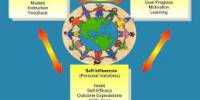Socioeconomic status (SES) is an economic and sociological total measure of a person’s work experience, economic access to resources, and social position in relation to others. It is a classification of individuals or households based on their social and economic standing in society. When determining a family’s SES, the household income, earners’ education, and occupation, as well as combined income, are considered, whereas an individual’s SES is determined solely by their own attributes. It is typically determined by a combination of factors such as income, level of education, occupation, and wealth. SES is frequently used to assess an individual’s or a group’s access to resources, opportunities, and overall well-being.
Recently, research has revealed that perceived financial stress, which defines the “balance between income and necessary expenses,” is a lesser-known attribute of SES. Financial stress can be measured by determining whether a person has more than enough, just enough, or not enough money or resources at the end of each month. However, SES is more commonly used to represent a societal economic difference.
To describe the three places a family or an individual may fall into, socioeconomic status is typically divided into three levels (high, middle, and low). When categorizing a family or individual, any or all of the three variables (income, education, and occupation) can be considered.
Here are some key components used to assess socioeconomic status:
- Income: It refers to the amount of money earned from various sources, such as employment, investments, or government assistance programs. Higher-income levels generally correlate with higher socioeconomic status.
- Education: Education level is often used as an indicator of socioeconomic status. Higher levels of education, such as advanced degrees, tend to be associated with higher socioeconomic status.
- Occupation: Socioeconomic status can be determined by the type of job and its associated status and income level. Professions requiring more education and specialized skills have a higher socioeconomic status.
- Wealth: Individuals’ or households’ wealth is defined as their accumulated assets and resources, which include savings, investments, property, and valuable possessions. It is a supplement that can provide a more complete picture of socioeconomic status.
Socioeconomic status can have a significant impact on many aspects of life, including access to quality education, healthcare, housing, and job opportunities. It can also have an impact on social mobility and life outcomes because people with higher socioeconomic status often have greater access to resources that can help them succeed.
















